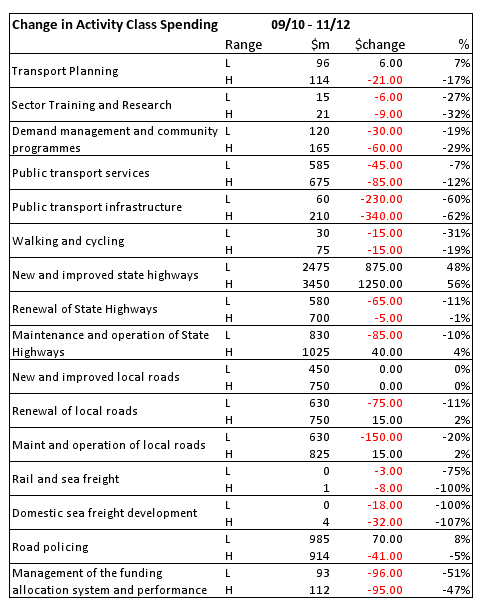Following on from the ARC’s media release of last week regarding funding for rail electrification in Auckland, Brian Rudman comments in the Herald:
When the new Government pulled the plug on the regional fuel tax six months ago, killing Auckland’s ability to buy itself a modern, electrified rapid-rail system, Transport Minister Steven Joyce told Aucklanders not to fret. He would come up with alternative funding arrangements.
Then in late May, after a trip to Australia, he returned full of the wonders of using a public-private partnership to buy the rolling stock.
He added that the PPP was not the only option being juggled by the Government and once more patted us on the head and said not to worry, electric rail was still on track for completion in 2013.
Reports now leaking out of Wellington paint a dispiriting picture of the alternatives being considered.
They suggest that far from being driven by a desire to create a first-world rapid-rail system such as any other city city of a similar size enjoys, the major driving force for this minister is a desire to meet the deadline as cheaply and Third Worldly as he can get away with.
Last December, after the passage of legislation supporting a regional fuel tax, the Auckland Regional Council called for expressions of interest internationally for the purchase of 140 electric rail cars.
A short list of seven suppliers had been selected at the time the Government’s action forced the process to be put on hold.
Industry sources suggest the Government now wants to almost halve the size of the new rail fleet to 75 and to make up the difference by collecting up all the second-hand electric locomotives that can be found around the country, giving them a lick of paint and an oil change, and pressing them into service dragging Auckland’s existing fleet of tarted-up old carriages.
Apparently a stockpile of retired electric locomotives in Palmerston North is being eyed up.
As well, some main trunk freight locomotives will become surplus to requirements, once the recently ordered fleet of 20 new freight locomotives arrives from China.
One report suggests more carriages may have to be bought.
Instead of the trains being short and swift and new, they will, because of the heavy freight locomotives pulling them, be long and slow to accelerate.
Another worry is the possibility that to save more money, the resurrected Onehunga branch line will not be electrified – a diesel shuttle will run back and forth instead – and the planned Parnell station will be shelved.
On Friday, Auckland Regional Council chairman Mike Lee said Aucklanders were running out of patience.
“We need those electric trains and we need to move now,” he said.
“We’re fed up with second-best for Auckland. We’ve had it since the 1950s, and this is going to be the end of it. We’re not going to meekly bow down and accept it.”
He called on Prime Minister John Key to tell his minister “to give at least as much commitment to mass transit in Auckland as you are to the holiday highways to the north of Auckland”.
An industry insider says that if money is the problem, Mr Joyce should do what the manager of any business-car fleet does, and approach the seven preferred tenderers with a lease-and-maintain deal instead of the original outright purchase proposition.
That way Aucklanders would get a new train fleet, not the Heath Robinson arrangement the Government is flirting with, and a guarantee of it being maintained. After 10 years or whatever, they could be replaced or kept on at a suitably adjusted price.
Buying this way would be more expensive than cash up front, but cheaper than a PPP scheme.
The advantage of a lease-and-maintain deal to a cash-strapped Government is that payments would be drip-fed. Also, the costs would be kept off the Government’s balance sheet, out of sight of the beady-eyed accountants from the international credit agencies.
Early this month, Finance Minister Bill English was bemoaning that it would take at least five years to catch up with Australia in infrastructure.
He told the Herald his advisers point to the economic benefits of getting infrastructure built to the right standards on time and to cost.
What better project to put this message into practice than Auckland’s long delayed rapid-rail system.


One thought on “Brian Rudman: Cheap won’t be a bargain for Auckland’s new rail system”
My experience in Philadelphia, PA USA with the Frankford Elavated trains is that the standardization of track size is a paramount concern. The riveted steel truss structure of Frankford Elavated (a supposedly temporary construction completed in 1929 was successfully reinforced while in operation over a number of years. The big glitch occured when the Budd Company cars (manufactured in Philadelphia) were replaced with cars which Unfortunately needed to be modified to accept a non-standard track size, making them heavier and slower. Electric rail might be a post mature industry since speeds over (sorry for the SAE) 100 miles per hour seem energy deficient. If America could get some inflation (post-Keynesian economic success) going, maybe NZ could buy American.